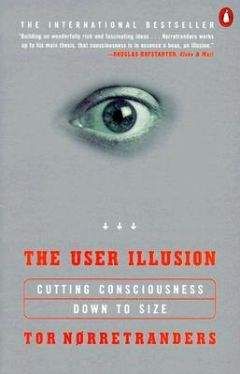Richard Bandler - Using Your Brain —for a CHANGE

Скачивание начинается... Если скачивание не началось автоматически, пожалуйста нажмите на эту ссылку.
Жалоба
Напишите нам, и мы в срочном порядке примем меры.
Описание книги "Using Your Brain —for a CHANGE"
Описание и краткое содержание "Using Your Brain —for a CHANGE" читать бесплатно онлайн.
Bandler is an innovator and an original thinker in the field of psychology. This book is a transcript of Bandler live in front of an audience, cutting up and cracking jokes as he is prone to do, talking about some of his unique and often practical views on how you can change your feelings, thoughts and behavior. Change is often easier than you think if you use the right method.
Betty: The sensation of warmth became intensified. I felt my body get warmer.
As you began to become aware of warm feelings, you said to yourself, "I'm waking up." What happens right after that? You haven't seen anything yet? No internal images?
Betty: I said, "I have to get up."
Is the voice loud? Are there any other sounds, or is there just a voice in there? Does it have tone?
Betty: It is a very calm voice, it's an easy voice.
Does the tone of that voice inside change as you begin to wake up more and more?
Betty: Yes. It speeds up and becomes more clear and distinct, more alert.
This is an example of what we call a motivation strategy. It's not the whole thing, but it's enough to give us the key piece that makes it work to get her to do something. She has an internal voice that sounds like a sleepy, calm voice. Then as it says, "I have to get up," it begins to speed up and change that tone to on that is more awake and alert.
I want all the rest of you to try this. Doing it yourself is how you really find out about how other people do things. You don't have to say the same words, but take a moment to close your eyes, feel your body, and then listen to a voice inside your head. Have that voice begin to talk to you in a tone that is sleepy and calm. . . , Now have that voice speed up a little, become a little louder and more alert. Notice how your feelings change. . . ,
Does that affect the way you feel? If it doesn't, check your pulse. An excited internal voice is a great way to wake yourself up whenever you need it. If you start talking to yourself and putting yourself to sleep at a time when you probably shouldn't, like on the freeway, you can learn to raise the volume and pitch, talk a little faster about something that is exciting, and it will wake you right up.
This is what many insomniacs do. They talk to themselves in a loud, high–pitched, excited voice, and it wakes them up — even if they're talking about how much they need to sleep. Insomniacs tend to be very alert and motivated. They think they don't sleep much, but studies have found that they actually sleep about as much as everybody else. What's different is that they also spend a lot of time trying to go to sleep, but they keep waking themselves up with their tone of voice.
The other main way to have insomnia is to look at lots of bright, flashing pictures, I asked one client what he did and he said, "Well, I start thinking about all the things that I may not be thinking about." I went home that night and tried it. "What is it I'm not thinking about?" Soon it was six in the morning, and I thought, "I know what it is — sleep!"
Now I want you to change your internal voice back the other way. Make it softer, lower, slower and sleepier, and notice how that makes you feel. , . .
Once I almost lost an audience doing this. Open your eyes and speed up that voice again, or you'll have to get the rest of this seminar unconsciously. This is something you can teach insomniacs, and it's also a process you can use yourself whenever you need it. For instance, I've learned that the best thing I can do on an airplane is to go unconscious. Between my house and the main airport is a short 20–minute flight. As soon as I sit down in the seat—sst—I'm out.
Man: When you're finding out how someone motivates herself, how do you know that you have gotten to the beginning of the sequence? For instance, Betty was saying the voice that was talking to her started getting louder. How do you know what questions to ask at that point?
That depends on your purpose in asking the questions. There is really no way to determine where somebody starts. You just need to get enough detail so that you can create the same experience. If I do it myself, and it works, then I've probably got enough information. The way to test these things is in experience —your own or someone else's.
Once I know someone's motivation strategy, I can literally motivate her to get out of a chair or do anything else by having her go through the same process: "Feel the chair, say to yourself, 'I have to get up.' Change your tonality and say it again in a voice that is faster, louder, and more alert." Whatever the process is that you use to get up in the morning, you probably use the same process to get yourself to walk downstairs to pick up a book, or to do anything else.
There are a lot of different ways that people use to motivate themselves. Rather than just tell you about them, I want you to get some experience of finding out about them on your own. Pair up with someone you don't know, and find out how she gets up out of bed in the morning. Everybody here had to do it at least this morning; the ones who can't do it didn't make it to this seminar. Start by asking simply, "How do you get up in the morning?" Your partner will give you one or two fairly general statements about what she does, and you'll have to ask more questions to get the rest of the details.
When you think you have the whole sequence, try it yourself to see if it works for you. For instance, your partner might say, I see the light coining in through the windows, and I say to myself, 'get up' and I get up." If you try that yourself — you look at light in the windows and say to yourself "get up" — you don't necessarily get up. It's not quite enough. You have to do more than that to make it work. People do these things automatically and unconsciously, so often you have to ask a lot of questions in order to get all the pieces.
Since this isn't a strategies seminar, I don't insist that you get every little detail. But I do want you to get the basic pieces in the sequence, and get the key piece that makes a difference. That will usually be an element that changes in a crucial way. With Betty, it was a change in voice tone that actually got her up. To find that out, you really have to be a stickler for detail. If somebody says, "I make a picture of myself getting up," you have to ask for more detail. "Is it a movie? Is it a slide? Does it have color? Is it big? Do you say anything to yourself? What tone of voice do you use?" These small details are what make the sequence work. Some of them will be much more effective than others, and you can find that out by changing them one at a time, and noticing the impact. Pair up now and try this; take about fifteen minutes each. . . .
Well, what did you find in there? How does your partner motivate himself? What were the key pieces in the sequence?
Bill: My partner first hears the alarm clock, and he looks at it as he turns it off. Then he lies down again, and feels how comfortable he is in bed. An internal voice says, "If you stay here, you'll go to sleep and be late," and he makes a picture of a time when he was late to work, and feels bad. Then the voice says, "It will be worse next time," and he makes a bigger picture of what will happen if he's late again, and feels worse. The sequence seems to be "voice, picture, bad feeling." When the bad feeling is strong enough, he gets up.
That's what we call "the old anxiety routine." You keep generating unpleasant feelings until you're motivated to avoid them. Rollo May has that one. He even wrote a long book about it, which can be summarized in one sentence: "Anxiety has been misunderstood; anxiety is good because it gets people to do things."If your motivation strategy runs on anxiety, that's absolutely right. But not everyone has that kind of motivation. For other people anxiety prevents them from accomplishing things. They think of doing something interesting, then they make a picture of how things could go wrong, then they feel anxious and just sit at home.
Suzi: I do something very similar to what Bill's partner does. I tell myself that I can rest for a few more minutes, and I do. But as time passes, my picture of being late gets bigger and closer and brighter. It stays the same picture, but when it's big enough, I have to get out of bed to stop the bad feelings.
Do you procrastinate in other things? (Yes.) How many of the rest of you did term papers at the last minute? The longer you waited, the more motivated you were. Bill's partner has his own internal anxiety generator. Suzi's runs off the clock. They are both very similar in that they use unpleasant feelings as a motivator. Did any of you find an example of motivation that used pleasant feelings — even to do an unpleasant task?
Frank: Yes, Marge pictured all the things she was going to do during the day and felt good about doing them. She said that those pleasant pictures "pulled her out of bed."
What if she only had unpleasant things to do that day? Did you ask her about that?
Frank: Yes, I did. She said she made pictures of those things being all done, and felt wonderful that they were done. That good feeling pulled her out of bed, too. That seemed unreal to me. I can't imagine that actually working, and I wanted to ask you about it.
Where's Marge? . . . Marge, when do you do your taxes? Marge: I have them done by mid–January. It's so nice to have them done, so I can do other things.
Well, it certainly seems to work for her. Nobody enjoys doing taxes, but most people enjoy having them done. The trick is to be able to access that good feeling of having them done ahead of time to get you started. Marge's motivation uses pleasant feelings instead of unpleasant ones. It's less common, and very strange to Frank, who does the opposite.
Lots of people are good at motivating themselves to do pleasant things. They just make pictures of doing the pleasant things, and are so attracted to these pictures that they start doing them. However, that process doesn't work for things you want to have done, but you don't like doing them, If you don't like doing taxes, and you make a picture of doing them, you'll feel repelled. That's not motivating at all. If you want to get motivated positively, you need to think about what's really attractive about a task. If you don't enjoy the task itself, what's attractive is having it done.
Actually there is another piece that needs to be there if Marge's motivation strategy is going to work. How many of you have thought about how nice it will be to have something done, and then you "ran out of gas" when you sat down and started on it?
Marge, when you start on your taxes, what keeps you going?
Marge: All along, I keep thinking about how nice it will be when they're all done.
That's an important piece, but I'll bet you also do something else.
Marge: Well, each time I write down a number or fill in a piece of the form, I feel good about getting that little piece done, too. It's like a little taste of the good feeling I'll have when it's all done.
Right. Those two pieces are what keep you going, and the second one will be more effective than the first. If you just think f it all being done, and it takes some time to finish a project, it can get to seem like "pie in the sky." But that good feeling of accomplishment you get every time you complete a small piece of the task will sustain you through a lot of drudgery.
Marge: That's interesting. It explains a lot of things in my life. People have often called me a "Pollyanna," because I'm always thinking of how good it will be when something unpleasant is over. I always get a lot done, but I've had trouble getting other people to do unpleasant jobs. When I tell them about how nice it will be when it's done, I usually get a blank stare.
Right. They just don't understand. That's not the way they motivate themselves.
Frank: It seems like you're saying that someone can be powerfully and effectively motivated without even having any unpleasant feelings. Is there any hope for the rest of us who propel ourselves with anxiety?
Sure. Like anything else people do, motivation strategies are learned, and you can always learn another one. It's fairly easy to teach you how to use Marge's strategy. But you have to be careful when you make such a pervasive change in someone's life,
Some people make lousy decisions, but since they aren't very motivated, they don't get into much trouble. If you teach them a really effective motivation strategy, they will actually carry out all those bad decisions, and do a lot of stupid, irrelevant, and possibly harmful things. So before I teach someone a powerful new motivation strategy, I make sure that the person already has an effective way of making decisions. If he doesn't, I'll teach him a new decision strategy before I teach him the new motivation strategy.
There are a lot of variations in how people motivate themselves, but we've already got examples of the two major patterns. Most people motivate themselves by thinking about how bad they will feel if they don't do something, and then they move away from that bad feeling. Rat psychologists call this "aversive conditioning."
A few people do the reverse, which is what Marge does. She uses pleasant feelings to move toward what she does want to have happen, instead of away from what she doesn't want to have happen — and she gets reinforcement along the way.
Someone with a motivation strategy like Marge's really lives in an entirely different world than most people — a world without a lot of the anxiety, unpleasantness, and stress that many people experience.
Many people have some combination of the two. They may first think of what will happen if they don't do something, and then think of how nice it will be when it's done.
All motivation strategies work, and you can't knock something that works. However, some of them are a lot faster and more tenacious, and a lot more enjoyable than others.
A lot of the problems that bring people into therapy, or into jail, have to do with motivation. Either they're not motivated to do things they want to do, or other people want them to do, or they are motivated to do things they, or other people, don't want them to do. What we've done here today is explore a little bit about how motivation works, so you can have some control over what you're motivated to do. What we've done here is only the beginning of what we can do with motivation, but it gives you something you can explore more on your own.
VI. Understanding Confusion
Many people get into difficulties because they're confused about something. I'd like to show you how to take confusion and make it into understanding. I need someone to play with, to demonstrate how this is done. After I demonstrate, I'm going to ask you to pair up and do it with each other, so pay attention.
Bill: I'd like to do that.
First think of something you're confused about, and you'd like to understand.
Подписывайтесь на наши страницы в социальных сетях.
Будьте в курсе последних книжных новинок, комментируйте, обсуждайте. Мы ждём Вас!
Похожие книги на "Using Your Brain —for a CHANGE"
Книги похожие на "Using Your Brain —for a CHANGE" читать онлайн или скачать бесплатно полные версии.
Мы рекомендуем Вам зарегистрироваться либо войти на сайт под своим именем.
Отзывы о "Richard Bandler - Using Your Brain —for a CHANGE"
Отзывы читателей о книге "Using Your Brain —for a CHANGE", комментарии и мнения людей о произведении.








